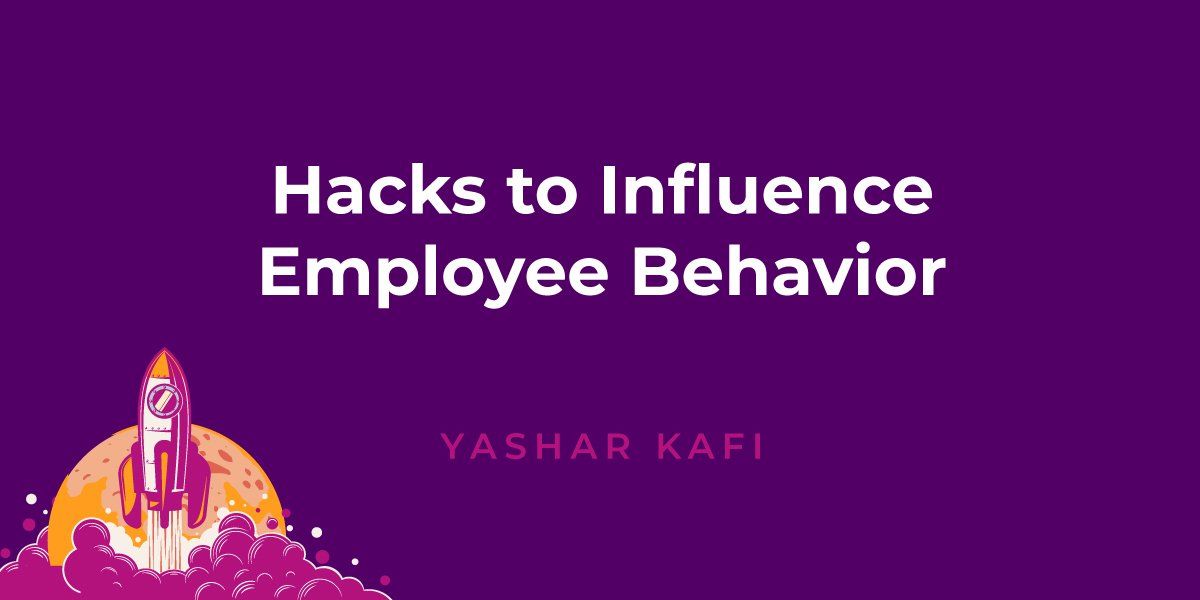Hacks to Influence Employee Behavior
Dale Carnegie wrote a self-help book titled How to Win Friends and Influence People. First published in 1936, the book has sold over 30 million copies worldwide, making it one of the best-selling books of all time, with many articles lauding its merits and wisdom. Uncovering how to influence is something many people are searching for, and this is especially true among CEOs and leaders in the business world.
So, I’ve got to wonder, as I am sure you have: Are there hacks or straightforward ways for influencing behavior, so we can better lead our teams? What if we apply marketing tactics to influence our teams to lead rather than sell? Let’s explore what that would look like and the incredible things it can accomplish for your workplace and team.
Persuasion Tactics Used in Marketing
Leaders need to develop skills that help with persuasion. An article from Fast Company provided 10 psychological theories that are excellent jumping points for persuasion tactics. Let’s take a look at a few of the main highlights:
Amplification Hypothesis
This shows that whatever you express, you amplify in reciprocal behavior. What you put out there, you get back. Show humility? Your attitude will meet a receptive audience open to your ideas. Present those ideas with an arrogant attitude? Watch that audience shut down and close off immediately in response.
Priming
Behold the power of suggestion. Priming involves influencing someone by, in essence, a bit of fun trickery, using stimuli to affect short-term thoughts and actions. As an example, think of magicians who use the power of suggestive words to prime a person to later believe or act upon some behavior.
Reciprocity Norm
The quintessential social norm in action here: Reciprocity deals with the sense of obligation or impulse to return favors or behavior mirror for what has been given to us or how we have been treated. Here is where the Golden Rule makes sense
Scarcity Principle
This taps into the age-old instinct of now or never, supply and demand. Let’s face it: People want what they know is in short supply or has limited availability. No one wants to miss out on an opportunity because they failed to act, employees included.
Social Influence
This one seems pretty self-explanatory. Don’t underestimate the power of the collective people and their opinions.
Applying Persuasion Tactics to Leadership
Leaders can take these psychologic principles (spun into persuasion tactics) and apply them to their own approach when dealing with their workplace team. What would this look like?
Amplify humility, openness, and mutual respect in the workplace by exhibiting this behavior yourself in every interaction with employees. Prime your employees with the power of suggestion, using words that manifest whatever goals you want to accomplish in your business strategy. Treat your employees how you would like them to treat you and one another. Create a sense of excitement—bordering on acceptable urgency—for action steps you wish your employees to take.
Leading Through Change
Leading people through change is critical to ensure the success of any endeavor. Why? Because in any shift or period of transition, there are anxieties that arise and bumps experienced along the way. Leaders have the pivotal role of leading their teams through these periods of change and setting the tone. They can make or break the situation. Their behavior and leadership influence everything from productivity levels during the transition to company culture and morale.
How To Influence Teams
This is simple, yet we complicate it. The bottom line for how leaders influence teams is to lead by example. I am sure you’ve heard it before because it’s true. What might this look like in your workplace? Again, as a leader, simply:
- Be honest and transparent
- Be patient and allow time for learning (people adapt and learn at different paces)
- Make yourself available and easily accessible to employees
- Stay positive
To learn more about how to improve leadership and manage teams, reach out to us today. We’ll get you started on the road to success.




